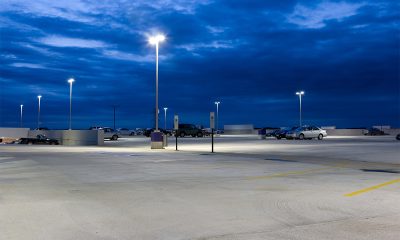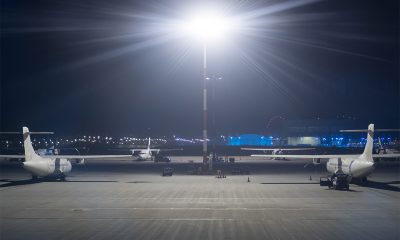Taxiway lighting is utilized to guide the aircraft to the runway from the apron and from the runway to the apron by illuminating the edge of taxiways in nighttime and low-visibility conditions. It is part of the aeronautical ground lighting (AGL) that provides the pilot of an aircraft with clear and consistent guidance on location, orientation and alignment in adverse visibility conditions and at night.
Taxiway lighting must be identified on the runway during the rollout of the aircraft from a distance that assists the pilot in transitioning from the runway to the taxiway. It must then guide the pilot through curves and intersections with other taxiways and runways and allows the pilot to steer the aircraft safely to the apron while avoiding leaving the pavement or colliding with building, structure or other aircraft in the maneuvering area.
Taxiway lighting is provided by taxiway centerline lights, taxiway edge lights, runway guard lights (RGL), runway stop bars and clearance bars.
Taxiway centerline lights are in-pavement, steady burning green lights that are placed in the pavement on the centerline of the taxiway in equal intervals over taxiway centerline markings. Alternate green and yellow lead-off centerline lights are installed to provide visual guidance that warns pilots and vehicle drivers of their presence in the runway environment or instrument landing system/microwave landing system (ILS) critical area.
Blue taxiway edge lights may also be installed to define the edge of the taxiway or apron.
Runway guard lights are flashing yellow lights that are required to be switched on whenever the runway is active to provide a warning of the close proximity of the runway.
A stop bar incorporates a row of unidirectional in-pavement red lights across the taxiway and an elevated red light on each side of the taxiway to control the access of aircraft onto the runway.
A clearance bar is installed at taxiway intersections, where the taxiway centerline lights do not go along with the taxiway curve and where taxiway edge lights are not installed, to indicate a low visibility hold point.



















Loading...